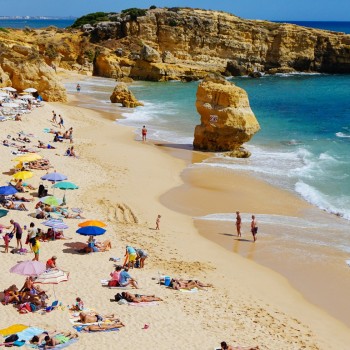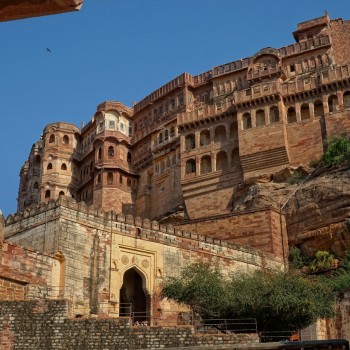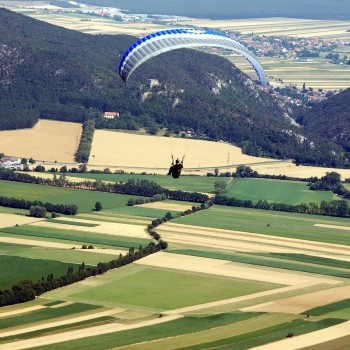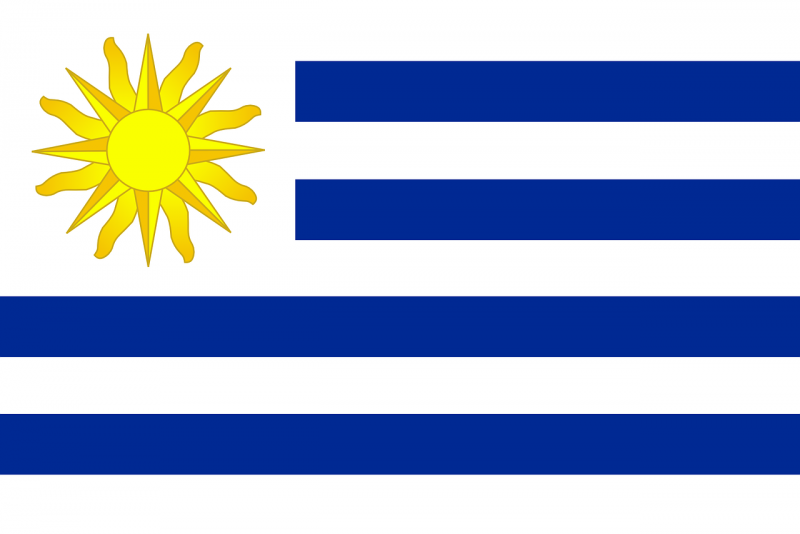Uruguay
Uruguay
Capital city description
The capital of Uruguay is Montevideo, which was founded in 1726—located on Uruguay’s southern coast, on the Río de la Plata’s northeastern bank. Montevideo has been the capital since 1828, with a housing population of 1,319,108 (2011 census), a figure representing about one-third of Uruguay’s total population; Montevideo is the largest city of Uruguay. Montevideo is the southernmost capital city of the entire Americas.
Climate
Uruguay has a climate that is relatively uniform nationwide. Seasonal variations are distinct, but extremes in temperature are rare. As would be expected by its abundance of water, high humidity and fog are common.
Summer is from December to March with a temperature between 21˚C to 28˚C, and winter is from June to September. The temperature during winter rarely falls below 0˚C, averaging between 10˚C and 16˚C. The wettest months in Uruguay are usually from March to June, and the rainfall is evenly distributed throughout the country and has a yearly average of 1000 millimeters.
Languages spoken
Spanish is the official language of Uruguay. It is spoken by almost 99% of the population of Uruguay. Near the Uruguayan border with Brazil, Brazilero, people speak a local dialect that is a mix of Portuguese and Spanish.
The Spanish language in Uruguay is thus softer than the Castilian Spanish of Spain, and some words are different between the two variants of the language.
Fun/Fascinating Facts
The country's national anthem, named the "Himno Nacional de Uruguay," is the world's longest national anthem in terms of duration. The entire song takes about 6 minutes to perform.
The country's name comes from the Uruguay River and means the river of the painted birds in the Guarani language.
The country has the lowest poverty and population-growth rates in South America, and they also have the highest urbanization and literacy rates in the region.
Uruguay ranked as the 23rd least corrupt country in the world on the World Corruption Perceptions Index. It is Latin America's least corrupt nation.
In Uruguay, every single house has its unique name.
Unique Customs/Traditions
- Uruguay is widely identified as the most tolerant LGBT country in South America. Same-sex marriages are allowed in Uruguay.
- The majority of Uruguayans love football. Adults and children play football on the streets, in backyards, and in other areas where it is permitted.
- Uruguay is the country that drinks the most mate; it is also drunk in Paraguay, Argentina, the south of Brazil, and some places in Chile and Bolivia. Mate is an infusion, similar to tea, and is usually shared among a group. It symbolizes friendship and equality; people sharing a mate also share conversations, intimacies, and confessions.
- It was a tradition for neighbors to bring chairs out from their houses onto the streets to sit and watch the different roadshows during Carnival. It happened all over the country and in the various neighborhoods in Montevideo, Uruguay’s capital city.
- In Uruguay, it is ubiquitous for people to have their grill and invite their families and friends to enjoy this feast altogether. Eating asado is not just a meal; it is a whole experience that starts when people get together, shop for food to put on the grill, start the fire, and finally cook and eat. To meet up for an asado is to experience a reunion, share friendship, and have a good time.
Popular universities
| Name | Description | |
|---|---|---|
| Universidad de la República | Universidad de la República (University of the Republic), founded in 1833, is a non-profit public higher education institution located in the urban setting of the metropolis of Montevideo and officially recognized by the Ministerio de Educación Cultura, Uruguay (Ministry of Education and Culture of Uruguay). Universidad de la República (UDELAR) offers courses and programs leading to officially recognized higher education degrees such as pre-bachelor degrees (i.e., certificates, diplomas, associate or foundation), bachelor's degrees, master degrees, doctorate degrees in several areas of study. UDELAR also provides academic and non-academic facilities and services to students, including a library, housing, sports facilities, study abroad and exchange programs, and administrative services. International students are welcome to apply for enrollment. | |
| Universidad ORT Uruguay | Universidad ORT Uruguay (ORT Uruguay University) is a non-profit private higher education institution located in the urban setting of the metropolis of Montevideo. It was founded in 1943 and officially recognized by the Ministerio de Educación y Cultura, Uruguay (Ministry of Education and Culture of Uruguay). Universidad ORT Uruguay (ORT) offers courses and programs leading to officially recognized higher education degrees such as pre-bachelor degrees (i.e., certificates, diplomas, associate or foundation), bachelor degrees, master degrees, doctorate degrees in several areas of study. ORT also provides academic and non-academic facilities and services to students, including a library, sports facilities, financial aids and scholarships, study abroad and exchange programs, online courses and distance learning opportunities, and administrative services. International students are welcome to apply for enrollment. | |
| Universidad Católica del Uruguay | E Universidad Católica del Uruguay (Catholic University of Uruguay) is a private higher education institution located in the urban setting of the metropolis of Montevideo. It was established in 1985 and officially recognized by the Ministerio de Educación y Cultura, Uruguay (Ministry of Education and Culture of Uruguay). Universidad Católica del Uruguay (UCUDAL) offers courses and programs leading to officially recognized higher education degrees such as pre-bachelor degrees (i.e., certificates, diplomas, associate or foundation), bachelor degrees in several areas of study. This higher education institution has an open admission policy. International applicants are eligible to apply for enrollment. UCUDAL also provides several academic and non-academic facilities and services to students, including a library, sports facilities, study abroad and exchange programs, and administrative services. | |
| Universidad de Montevideo | Universidad de Montevideo (University of Montevideo) is a non-profit private higher education institution located in the urban setting of the metropolis of Montevideo. It was established in 1997 and officially recognized by the Ministerio de Educación y Cultura, Uruguay (Ministry of Education and Culture of Uruguay). Universidad de Montevideo (UM) offers courses and programs leading to officially recognized higher education degrees such as bachelor's degrees, master's degrees in several areas of study. UM also provides academic and non-academic facilities and services to students, including a library, sports facilities, study abroad and exchange programs, and administrative services. International applicants are eligible to apply for enrollment. | |
| Universidad de la Empresa | Universidad de la Empresa (University of Enterprise) is a non-profit private higher education institution located in the urban setting of the metropolis of Montevideo. It was established in 1992 and officially recognized by the Ministerio de Educación y Cultura, Uruguay (Ministry of Education and Culture of Uruguay).Universidad de la Empresa (UDE) offers courses and programs leading to officially recognized higher education degrees such as pre-bachelor degrees (i.e., certificates, diplomas, associate or foundation), bachelor degrees, master degrees, doctorate degrees in several areas of study. This higher education institution has an open admission policy. International applicants are eligible to apply for enrollment. UDE also provides several academic and non-academic facilities and services to students, including a library, sports facilities, study abroad and exchange programs, and administrative services. | |
| Universidad Tecnológica | Universidad Tecnológica (Technological University of Uruguay) was founded in 2012. It is a non-profit public higher education institution located in the suburban setting of the metropolis of Montevideo and officially recognized by the Ministerio de Educación y Cultura. Universidad Tecnológica (UTEC) offers courses and programs leading to officially recognized higher education degrees such as pre-bachelor degrees (i.e., certificates, diplomas, associate or foundation), bachelor degrees in several areas of study. International students are welcome to apply for enrollment. UTEC also provides several academic and non-academic facilities and services to students, including a library, sports facilities, study abroad and exchange programs, online courses and distance learning opportunities, and administrative services. | |
| Instituto Universitario Asociación Cristiana de Jóvenes | Instituto Universitario Asociación Cristiana de Jóvenes (Christian Youth Association University Institute) is a private higher education institution located in the metropolis of Montevideo. This institution also has a branch campus in Maldonado. Established in 2000 and officially recognized by the Ministerio de Educación y Cultura, Uruguay (Ministry of Education and Culture of Uruguay). Instituto Universitario Asociación Cristiana de Jóvenes (IUACJ) offers courses and programs leading to officially recognized higher education degrees in several areas of study. IUACJ also provides several academic and non-academic facilities and services to students, including a library and administrative services. | |
| Instituto Universitario Centro Latinoamericano de Economía Humana | Instituto Universitario Centro Latinoamericano de Economía Humana (Latin American Center for Human Economics University Institute) is a non-profit private higher education institution located in the metropolis of Montevideo. Founded in 1957 and officially recognized by the Ministerio de Educación y Cultura, Uruguay (Ministry of Education and Culture of Uruguay). Instituto Universitario Centro Latinoamericano de Economía Humana (CLAEH) offers courses and programs leading to officially recognized higher education degrees such as bachelor's degrees, master's degrees in several areas of study. CLAEH also provides several academic and non-academic facilities and services to students, including a library and administrative services. This institution also has branch campuses in the following locations: Punta del Este, Tacuarembó. | |
| Instituto Universitario Bios | Instituto Universitario Bios (Bios University Institute) is a private higher education institution located in the metropolis of Montevideo. Founded in 1995 and officially recognized by the Ministerio de Educación y Cultura, Uruguay (Ministry of Education and Culture of Uruguay). Instituto Universitario Bios (IUB) offers courses and programs leading to officially recognized higher education degrees such as bachelor's degrees in several areas of study. IUB also provides several academic and non-academic facilities and services to students, including a library and administrative services. | |
| Facultad de Teología del Uruguay Mons. Mariano Soler | Facultad de Teología del Uruguay Mons. Mariano Soler (Mons. Mariano Soler Faculty of Theology of Uruguay) is a private higher education institution located in the metropolis of Montevideo. Established in 2000 and officially recognized by the Ministerio de Educación y Cultura, Uruguay (Ministry of Education and Culture of Uruguay), Facultad de Teología del Uruguay Mons. Facultad de Teología del Uruguay Mons. Mariano Soler offers courses and programs leading to officially recognized higher education degrees such as bachelor's degrees in several areas of study. Mariano Soler also provides several academic and non-academic facilities and services to students, including a library and administrative services. | |
Festivals & Events
.jpg)
Inaugural party Carnival Parade
Date: Last week of January
Inaugural party Carnival celebrates on the fourth week of January. On this occasion, different groups like mules, comedians, parodists, and comparsas parade through the main avenue of the Uruguayan capital.
It’s said to be the longest parade in the world recognized by UNESCO.

Lemanjá
Date: February
Lemanjá comes from the name of a god from one of the faiths named Umbanda. Umbanda itself is a belief practiced in Uruguay. This festival is where followers of the Umbanda faith make offerings to the goddess of the Sea on Ramírez Beach, Montevideo. There are also rituals like drumming and singing memorable songs.
During the ritual, the participants usually sit and wait until sunset, then after that, they push the boat into the sea and walk to the shallow sea to make offerings in the form of gifts prepared beforehand. All participants dress in white.

Noche Blanca
Date: January
Noche Blanca or White Night is a summer party in Uruguay. This lively event takes place in January. This coastal city’s streets are brimming with loud music, bright lights, live performances, art installations, and a lot more. In keeping with the theme, attendees wear white and party all night to immerse themselves in the local culture. Small businesses get to showcase and sell their products.
The White Night is a tourist-cultural proposal that originated in Paris in 2002. Its great success has spread to other cities worldwide, taking inspiration from the original model, giving it the identity of each place.
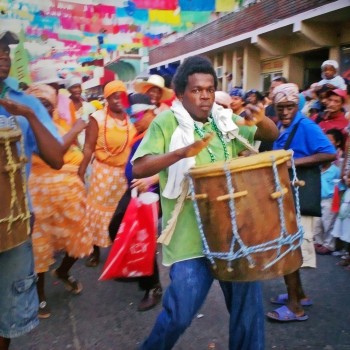
Las Llamadas
Date: February
The first and biggest festival in Uruguay is the Las Llamadas Festival. This Uruguay event is held to pay tribute to the ancestors in the Sur and Palermo regions. Las Llamadas comes from the word taken from the history of negroes who gathered to resolve existing issues. There is entertainment that includes street dancers, drum music, and parades.

Epiphany
Date: January 6
Epiphany is a Christian tradition that takes place on January 6 (12 days after Christmas). Large families exchange gifts, dress up, sing, dance, and eat large dishes together in this festival.
This festival also marks the start of the new carnival season in Uruguay. During Epiphany, you will take part in exchanging gifts and enjoy big meals.

Dia de Muertos
Date: November 1
Dia de Muertos is one of South America’s and Uruguay’s biggest celebrations. It is different in Uruguay. All Saint’s Day, which remembers the patron saints and dead infants, is celebrated on November 1, with the day of the Dead following the next day.
On November 1, they celebrate friends or family that are not alive by visiting their graveside with colorful and flashy costumes, and most of these are skull costumes. Although the method is different, this Uruguay tradition and holiday aims to pay respects and remember all those who have left us.
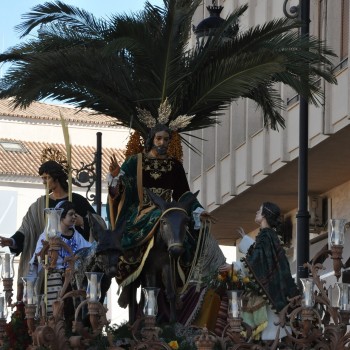
Holy Week (Semana Santa)
Date: Easter Weekend
The next festival is one of the biggest religious festivals in Uruguay. This celebration starts on Easter weekend. Usually, there are several parades in the middle of the city of Montevideo, which also happens to be one of the best places to visit in Uruguay.
During this celebration, Christians carry out several traditions such as fasting, and they also refrain from eating meat products or milk, but they are allowed to consume eggs. There is also the tradition of visiting churches to pray and to gather with relatives.

Milk Festival
Date: October
The Milk Festival held at Cardal, the largest milk production site in Uruguay, is found in the South Florida district. During this festival, people celebrate by making big Asado, traditional food made of grilled meat that has a massive size so that everyone can get a piece. In addition, they also make Arroz con Leche, a dish in the form of rice that has been processed with milk, of course with large portions. There are also celebrations with music and dance parties that everyone enjoys during the festive.
Attractions / Top Sights
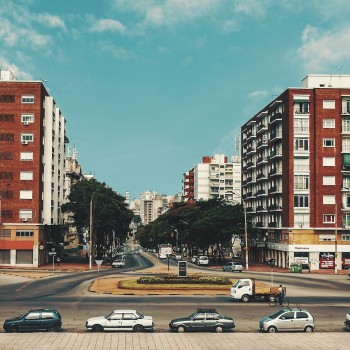
Montevideo
When to visit: October to March
Montevideo, the capital of Uruguay, is a bustling place full of life, with loads of theaters, art galleries, and music venues on offer.
In addition to the lively cultural scene, there is a happening nightlife, with lots of tango bars, trendy cocktail lounges, and discos scattered about the city. Montevideo has something for everyone to enjoy, and the historic downtown area is captivating to explore, with beautiful neoclassical buildings dotted about here and there.

Punta del Este
When to visit: February 12th to May 20th. or. October 1st to December 2nd
Punta’s famous landmark is a monster-sized sculpted hand protruding from the sands of Playa Brava.
This upmarket beach resort town is so luxurious and fancy that it is often called the Monaco or Saint-Tropez of South America, where yachts, casinos, and trendy cocktail bars abound in this playground of the rich.

Tacuarembo
When to visit: From mid-October to mid-April.
Located in the north of the country, Tacuarembo is as gaucho as they come, and the rolling hills surrounding the city are full of cattle and sprawling fields. There is a distinctive cowboy feel about the place, and the culture, language, and food here are very different from the rest of Uruguay.
With lovely leafy plazas and tree-filled avenues for you to enjoy, wandering around town is a delightful experience. It is here that the legendary tango star Carlos Gardel is reputed to have been born.
The main sights on offer include:
- A beautiful cathedral.
- The picturesque 19th of April Plaza.
- A couple of fascinating museums.
The surrounding area has some lovely waterfalls and grottoes for you to visit.
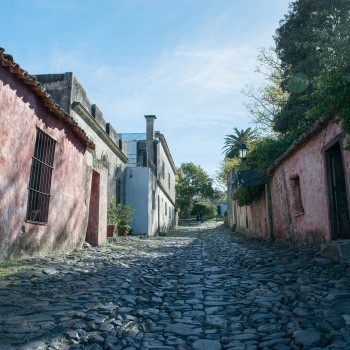
Colonia del Sacramento
When to visit: Between November and the end of March or April
The historic quarter of Colonia del Sacramento is one of the oldest cities in Uruguay, and incredible colonial architecture and picturesque old cobbled streets are everywhere.
Having been ruled at various times by the Spanish and Portuguese who fought over it, there is an exciting mix of architectural styles. A city wall that once protected the city from invaders still runs around the old quarter—lying next to the Rio de la Plata, there are some great museums for visitors to enjoy.
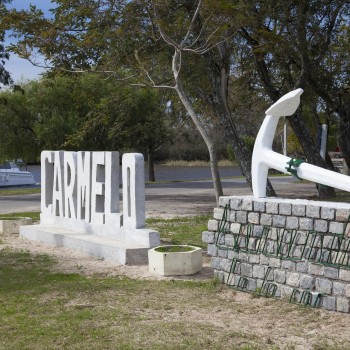
Carmelo
When to visit: February 19th to May 27th. or. August 27th to December 16th
Located near the spot where the Rio de la Plata and the Rio Uruguay join, Carmelo is an increasingly popular tourist destination, and with wonderful old buildings and cobbled streets make up much of the town.
The stunning waterfront is beautiful to wander along, and from Carmelo, you can take boat trips to the magical Parana Delta, which is fantastic to explore. There are also various activities such as fishing, yachting, and other watersports with some lovely beaches, brilliant wineries in the surrounding countryside, and a casino to boot,
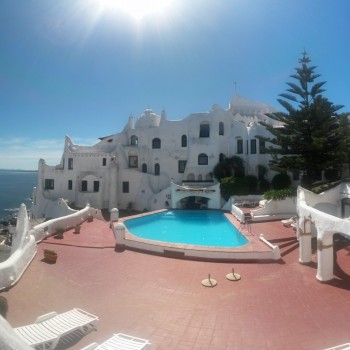
Piriapolis
When to visit: February 26th to May 27th. or October 15th to January 21st
Piriapolis’ beautiful beaches are great for lounging on, and the long promenade that hugs the waterfront is perfect for relaxing strolls while taking in the sun and river views.
It had several excellent hotels, restaurants, bars, casinos, and shops, particularly as you get nearer to the coastline.
While the waterfront Rambla is the most popular vie in the city, the delightful Pira’s Castle is well worth checking out, and the Hotel Colon is magical to behold.

La Paloma
When to visit: February to May
La Paloma lies on the coast of the Atlantic Ocean, a popular summer beach resort amongst South Americans and Uruguayans themselves, who flock here to enjoy the sun, sea, and sand. With spectacular beaches, this laid-back city is great to visit, and there are lots of fun watersports for you to try out, such as surfing, sailing, and windsurfing.
One of the best beaches for sunbathing is Anaconda Beach, where watching the sunset over the ocean is divine.
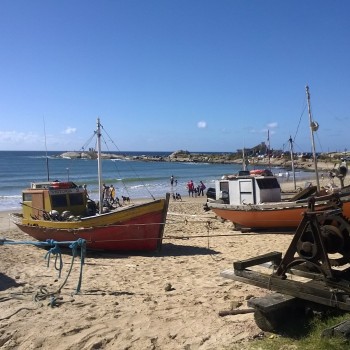
Punta del Diablo
When to visit: February to May
Punta del Diablo (Devil's Point)is a lovely place to visit with a picturesque and charming little fishing village. It is an hour and a world away from Punta del Este—but it still offers plenty of high-end cuisines, shops, and accommodations overlooking the rocky waters.
Beautiful beaches and a laid-back way of life make it a relaxing place to kick back and watch while having some delicious seafood.







